Abstract
With concurrent chains arranged for a pigeon's key pecks, pecks on two concurrently available initial-link keys (left and right) respectively produce separately operating terminal links (A and B). Preferences for terminal link A over terminal link B are usually calculated as deviations of relative initial-link response rates (left divided by total pecks) from those during baseline conditions, when A equals B. Baseline preferences, however, are often variable and typically are determined indirectly (e.g., with unequal A and B, reversing left-right assignments of A and B over sessions and estimating the baseline from differences between the relative rates generated). Multiple concurrent-chain schedules, with components each consisting of a pair of concurrent chains, speed the determination of preferences by arranging A and B and their reversal within sessions. In two experiments illustrating the feasibility of this procedure, one component operated with circles projected on initial-link keys and the other with pluses; when left and right initial-link pecks respectively produced terminal links A and B in one component, they produced B and A in the other. Even as the baselines fluctuated, preference was observable within sessions as the difference between relative initial-link response rates in the two components. The first experiment demonstrated the rapid development of preferences when terminal links A and B consisted of fixed-interval 15-s and 30-s schedules. The second demonstrated the sensitivity of the procedure to preference for a fixed-interval 30-s schedule operating for pecks on either of two keys (free choice) over its operating for pecks on only a single key (forced choice).
Full text
PDF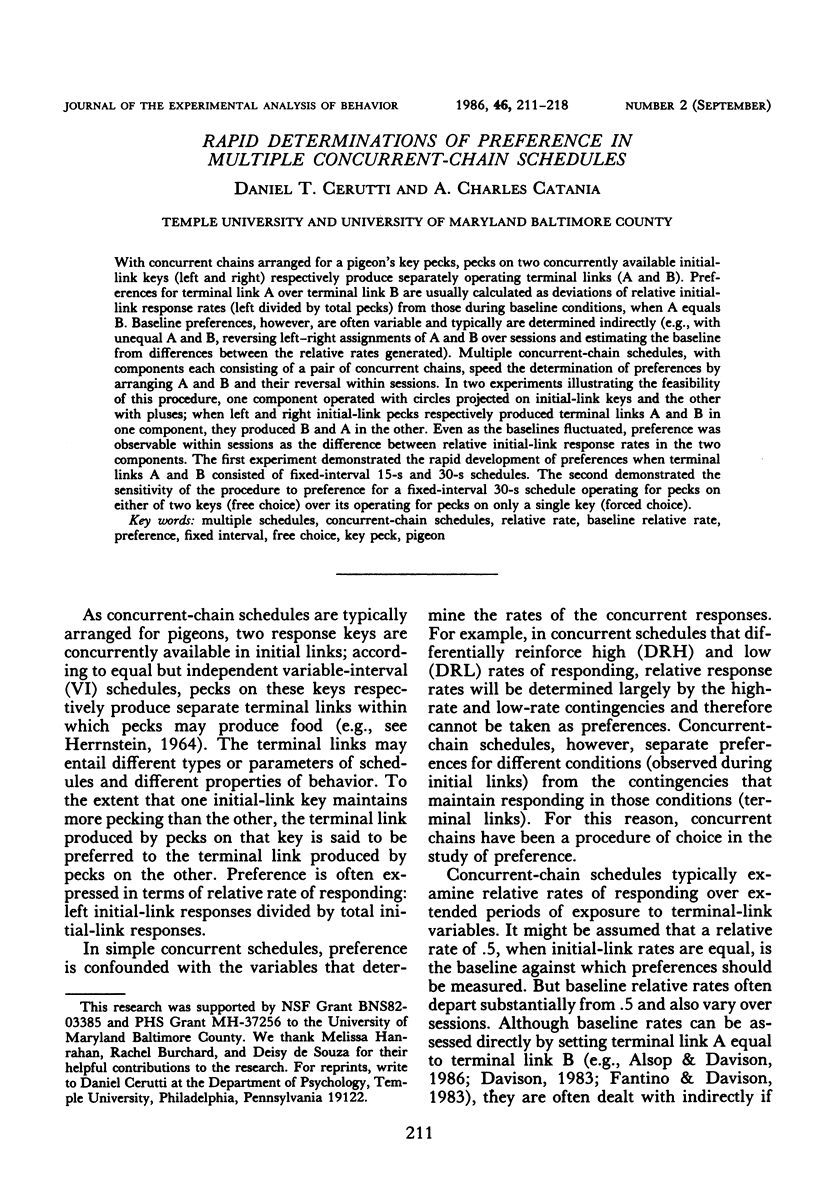
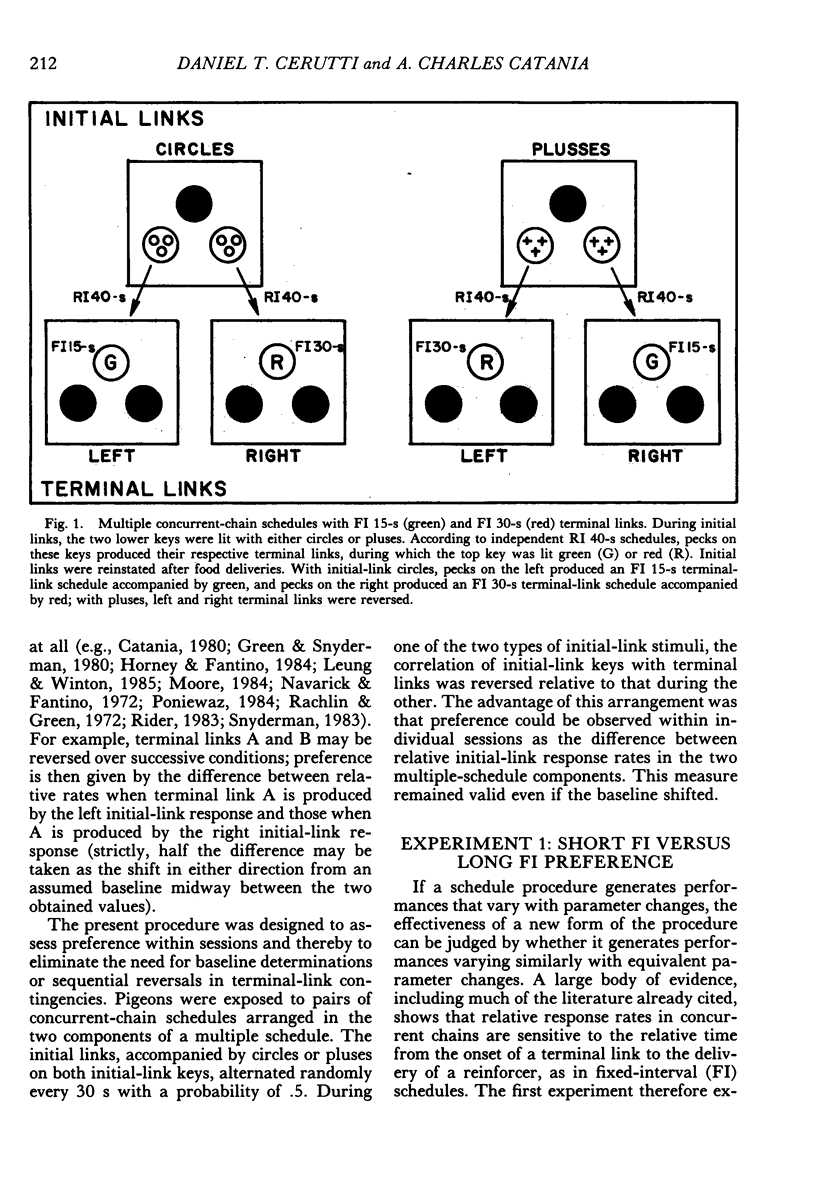
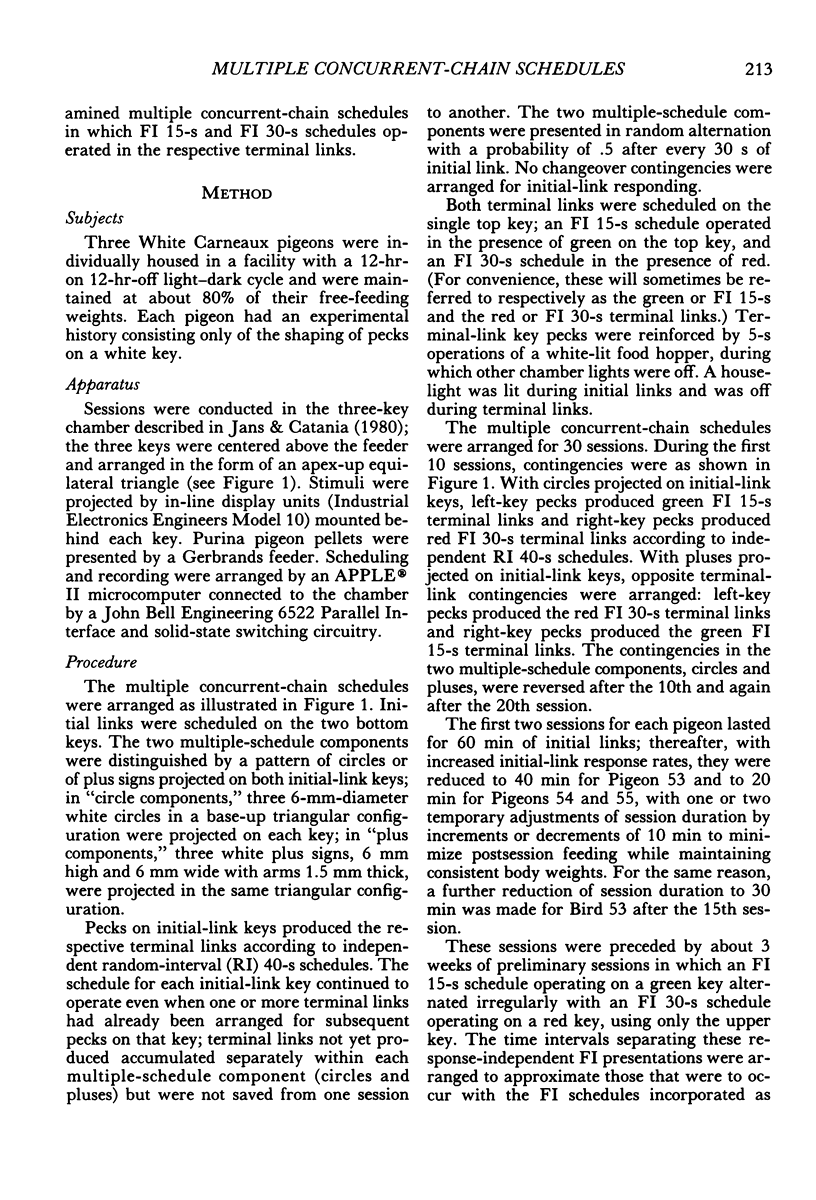
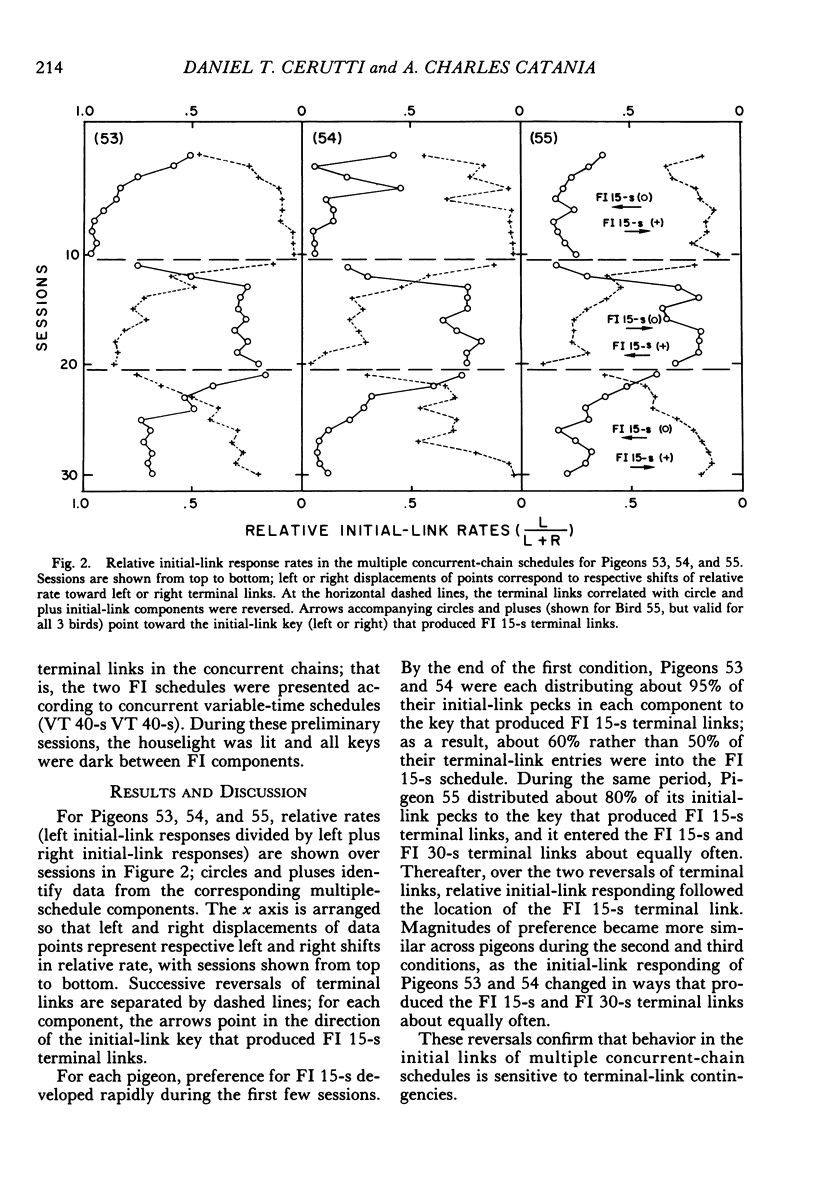
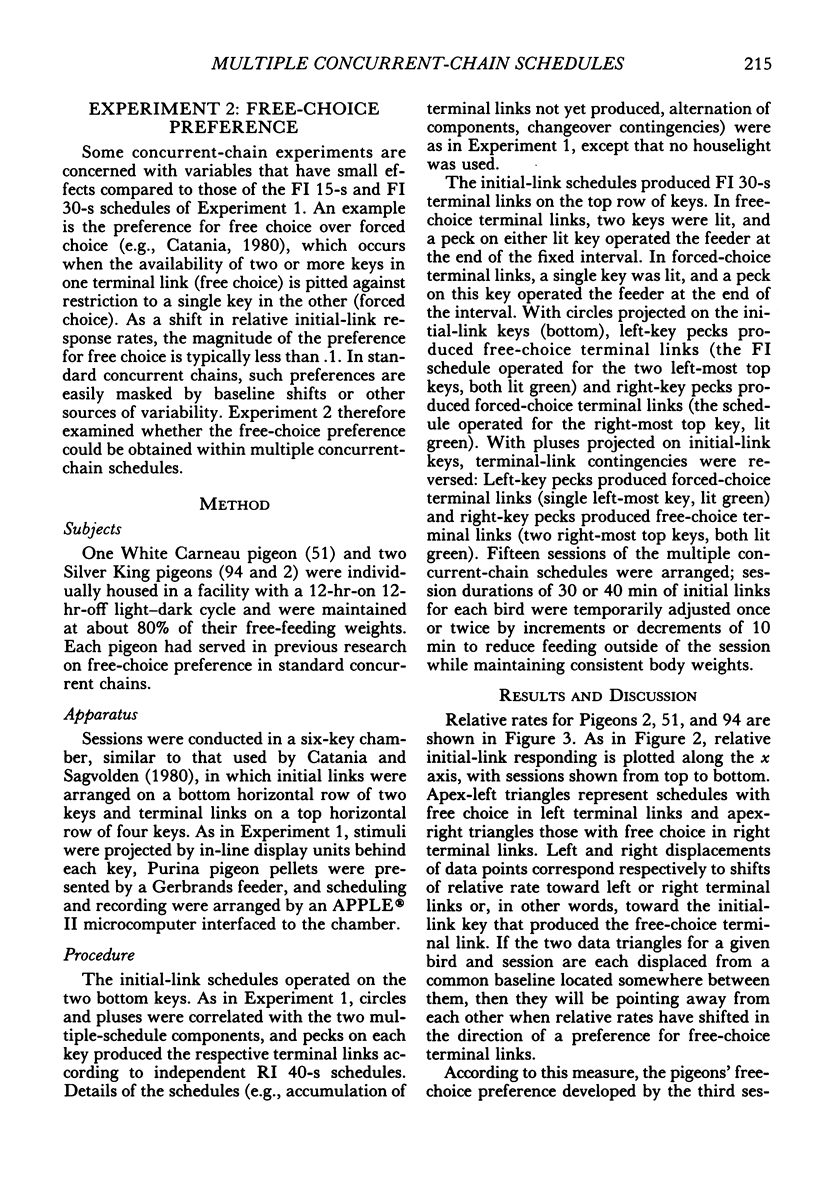
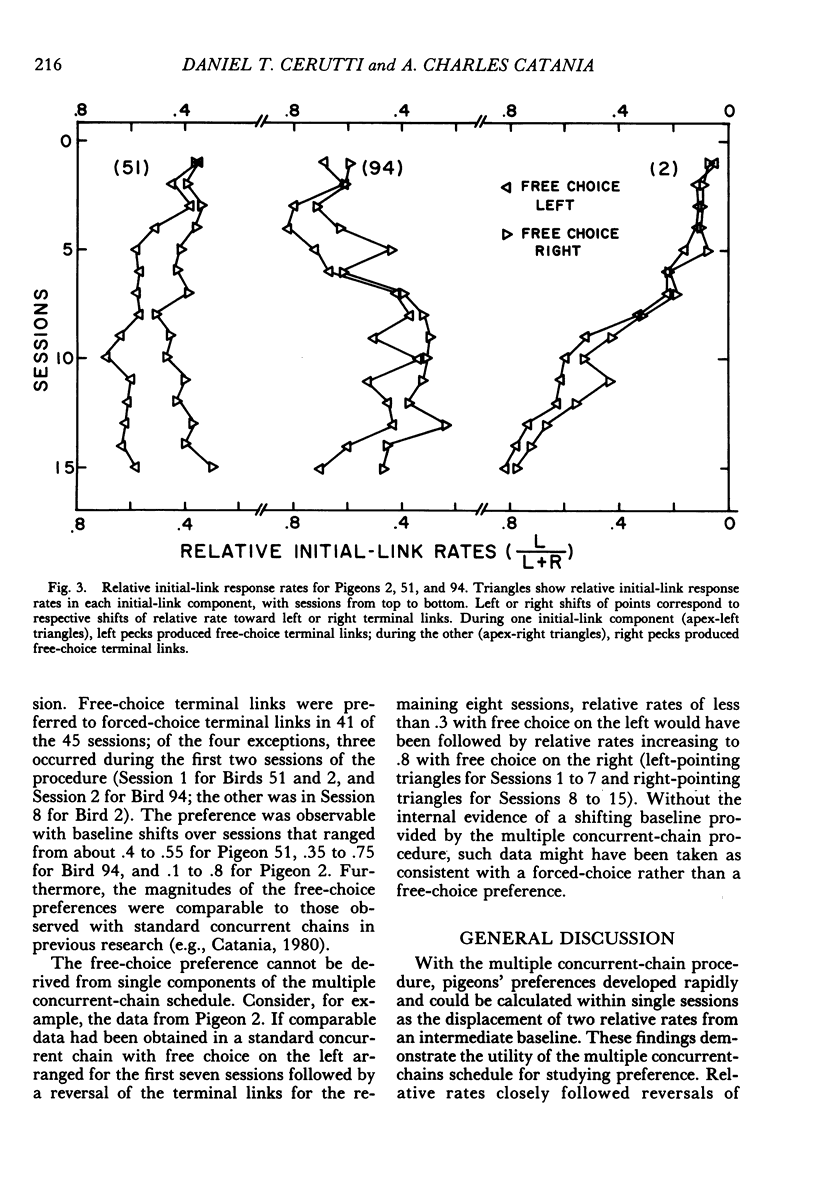
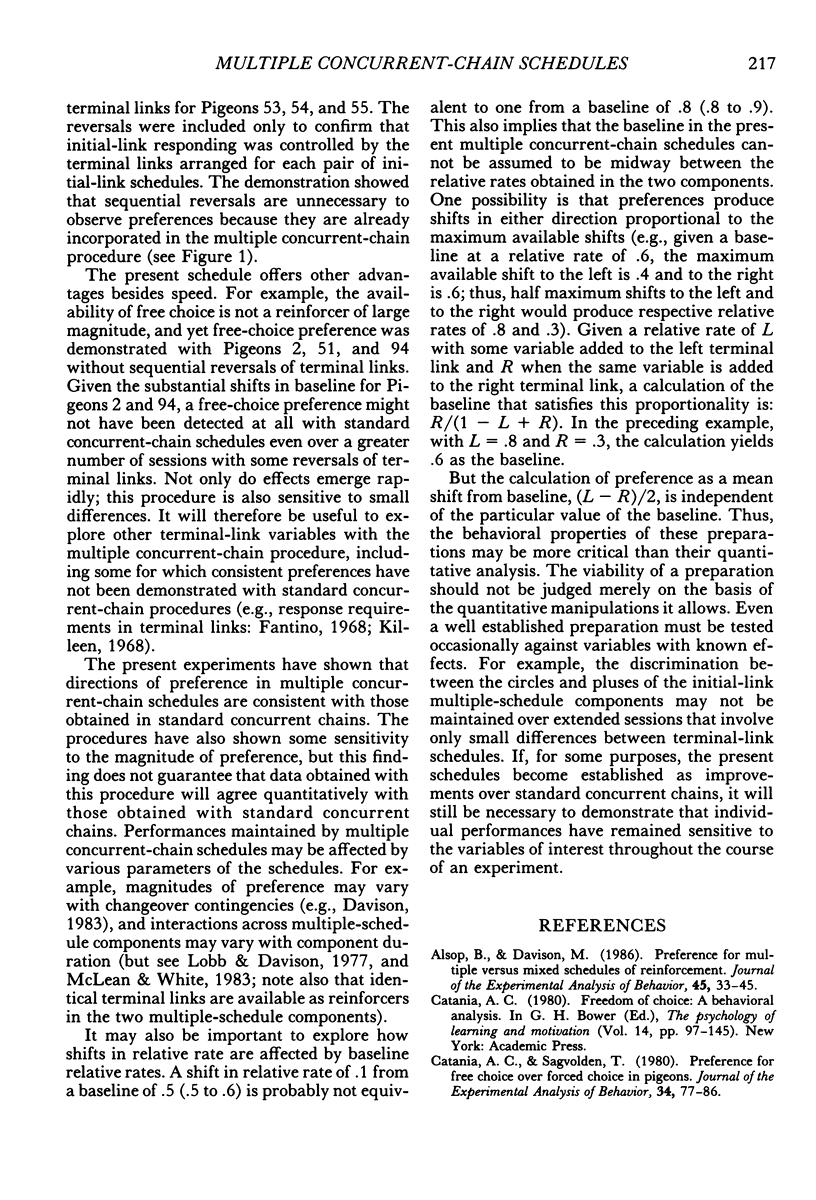
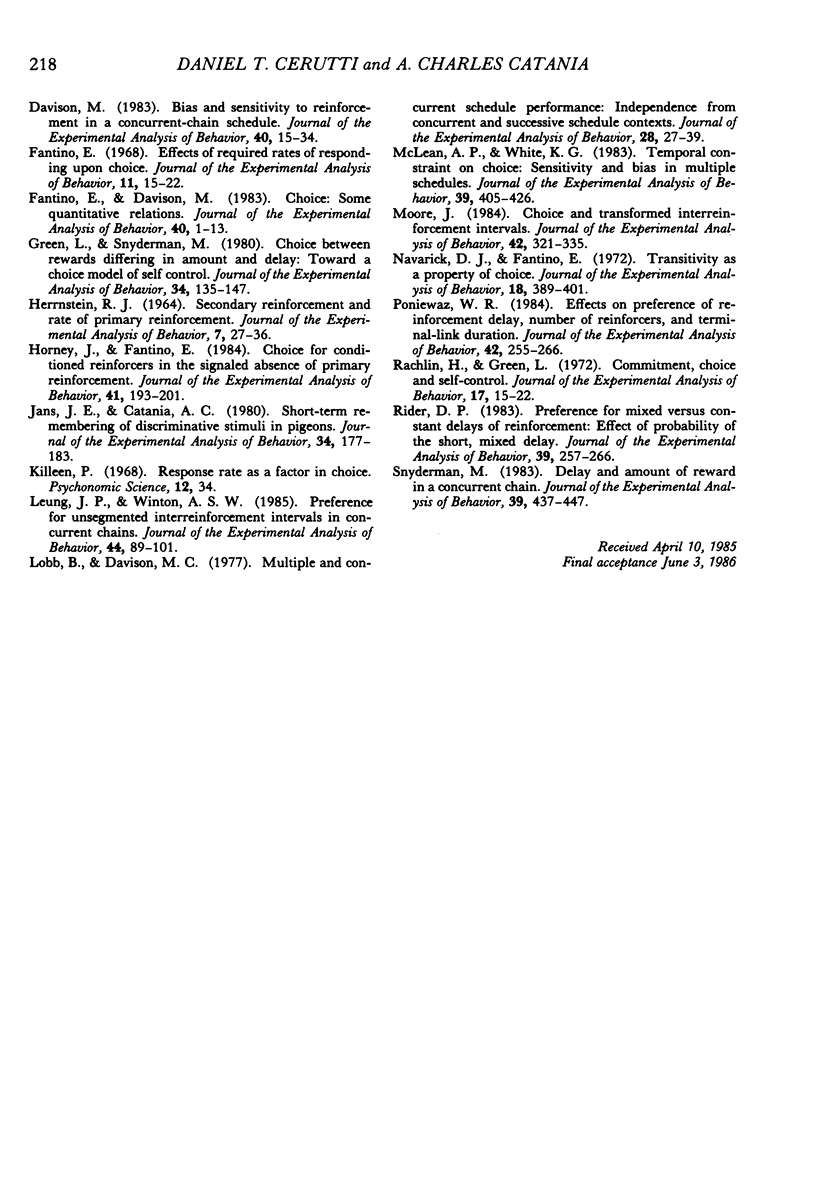
Selected References
These references are in PubMed. This may not be the complete list of references from this article.
- Alsop B., Davison M. Preference for multiple versus mixed schedules of reinforcement. J Exp Anal Behav. 1986 Jan;45(1):33–45. doi: 10.1901/jeab.1986.45-33. [DOI] [PMC free article] [PubMed] [Google Scholar]
- Catania A. C., Sagvolden T. Preference for free choice over forced choice in pigeons. J Exp Anal Behav. 1980 Jul;34(1):77–86. doi: 10.1901/jeab.1980.34-77. [DOI] [PMC free article] [PubMed] [Google Scholar]
- Davison M. Bias and sensitivity to reinforcement in a concurrent-chain schedule. J Exp Anal Behav. 1983 Jul;40(1):15–34. doi: 10.1901/jeab.1983.40-15. [DOI] [PMC free article] [PubMed] [Google Scholar]
- Fantino E., Davison M. Choice: Some quantitative relations. J Exp Anal Behav. 1983 Jul;40(1):1–13. doi: 10.1901/jeab.1983.40-1. [DOI] [PMC free article] [PubMed] [Google Scholar]
- Fantino E. Effects of required rates of responding upon choice. J Exp Anal Behav. 1968 Jan;11(1):15–22. doi: 10.1901/jeab.1968.11-15. [DOI] [PMC free article] [PubMed] [Google Scholar]
- Green L., Snyderman M. Choice between rewards differing in amount and delay: Toward a choice model of self control. J Exp Anal Behav. 1980 Sep;34(2):135–147. doi: 10.1901/jeab.1980.34-135. [DOI] [PMC free article] [PubMed] [Google Scholar]
- HERRNSTEIN R. J. SECONDARY REINFORCEMENT AND RATE OF PRIMARY REINFORCEMENT. J Exp Anal Behav. 1964 Jan;7:27–36. doi: 10.1901/jeab.1964.7-27. [DOI] [PMC free article] [PubMed] [Google Scholar]
- Horney J., Fantino E. Choice for conditioned reinforcers in the signaled absence of primary reinforcement. J Exp Anal Behav. 1984 Mar;41(2):193–201. doi: 10.1901/jeab.1984.41-193. [DOI] [PMC free article] [PubMed] [Google Scholar]
- Jans J. E., Catania A. C. Short-term remembering of discriminative stimuli in pigeons. J Exp Anal Behav. 1980 Sep;34(2):177–183. doi: 10.1901/jeab.1980.34-177. [DOI] [PMC free article] [PubMed] [Google Scholar]
- Leung J. P., Winton A. S. Preference for unsegmented interreinforcement intervals in concurrent chains. J Exp Anal Behav. 1985 Jul;44(1):89–101. doi: 10.1901/jeab.1985.44-89. [DOI] [PMC free article] [PubMed] [Google Scholar]
- Lobb B., Davison M. C. Multiple and concurrent schedule performance: independence from concurrent and successive schedule contexts. J Exp Anal Behav. 1977 Jul;28(1):27–39. doi: 10.1901/jeab.1977.28-27. [DOI] [PMC free article] [PubMed] [Google Scholar]
- McLean A. P., White K. G. Temporal constraint on choice: Sensitivity and bias in multiple schedules. J Exp Anal Behav. 1983 May;39(3):405–426. doi: 10.1901/jeab.1983.39-405. [DOI] [PMC free article] [PubMed] [Google Scholar]
- Moore J. Choice and transformed interreinforcement intervals. J Exp Anal Behav. 1984 Sep;42(2):321–335. doi: 10.1901/jeab.1984.42-321. [DOI] [PMC free article] [PubMed] [Google Scholar]
- Navarick D. J., Fantino E. Transitivity as a property of choice. J Exp Anal Behav. 1972 Nov;18(3):389–401. doi: 10.1901/jeab.1972.18-389. [DOI] [PMC free article] [PubMed] [Google Scholar]
- Poniewaz W. R. Effects on preference of reinforcement delay, number of reinforcers, and terminal-link duration. J Exp Anal Behav. 1984 Sep;42(2):255–266. doi: 10.1901/jeab.1984.42-255. [DOI] [PMC free article] [PubMed] [Google Scholar]
- Rachlin H., Green L. Commitment, choice and self-control. J Exp Anal Behav. 1972 Jan;17(1):15–22. doi: 10.1901/jeab.1972.17-15. [DOI] [PMC free article] [PubMed] [Google Scholar]
- Rider D. P. Preference for mixed versus constant delays of reinforcement: Effect of probability of the short, mixed delay. J Exp Anal Behav. 1983 Mar;39(2):257–266. doi: 10.1901/jeab.1983.39-257. [DOI] [PMC free article] [PubMed] [Google Scholar]
- Snyderman M. Delay and amount of reward in a concurrent chain. J Exp Anal Behav. 1983 May;39(3):437–447. doi: 10.1901/jeab.1983.39-437. [DOI] [PMC free article] [PubMed] [Google Scholar]


